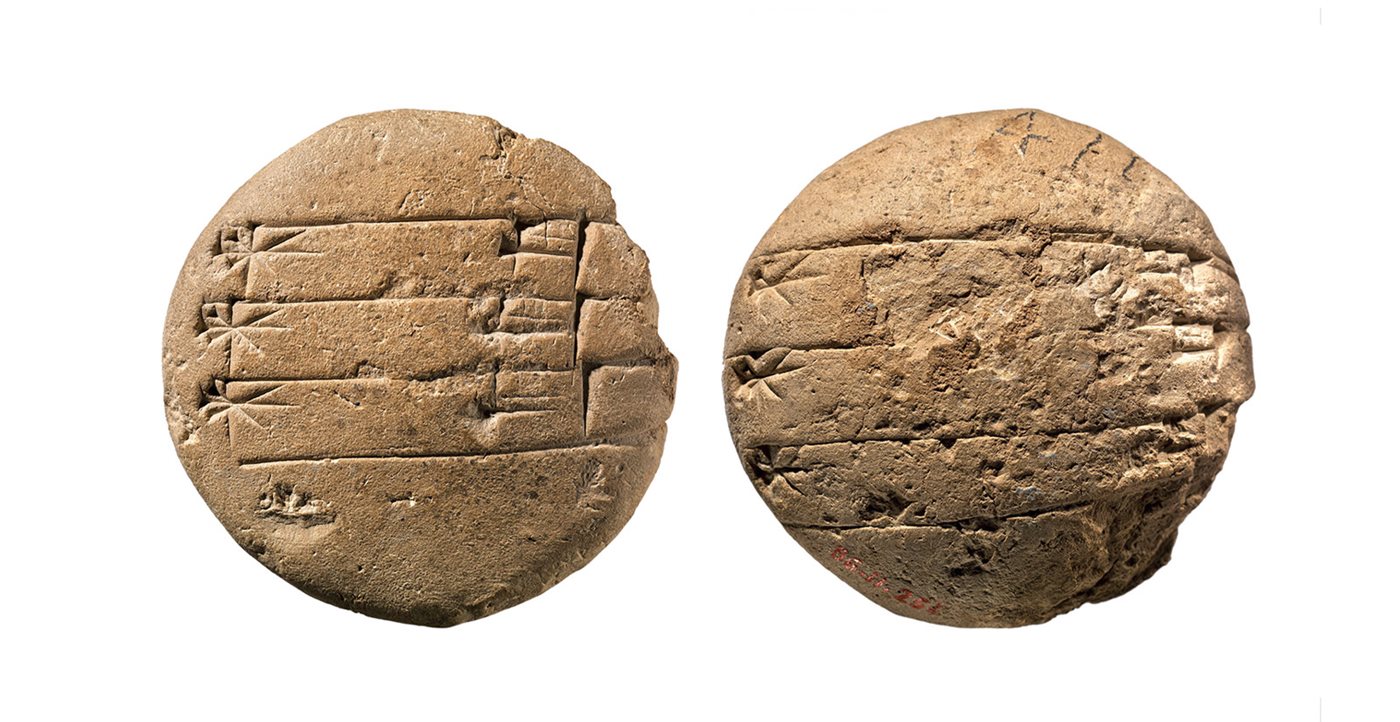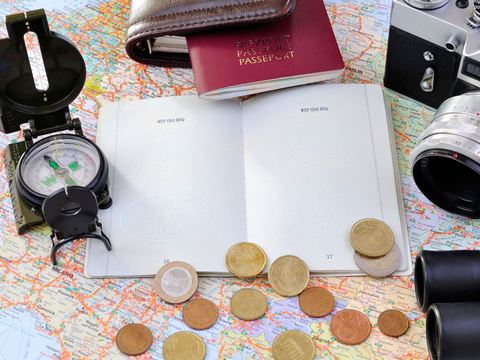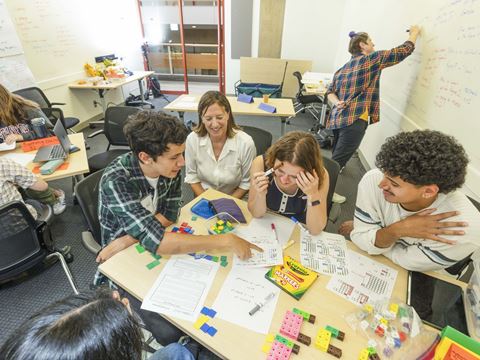
Schools Then and Now—and Your Ideal School
Subject:
Archeology
Region:
Mesopotamia
What were schools like thousands of years ago? One scholar might have been joking when he noted “how little has changed over the past 3,000 years.” When you read “Texting Cuneiform,” you’ll find out about education in ancient Mesopotamia.
For students: We hope this guide sharpens your reading skills and deepens your understanding.
For teachers: We encourage reproduction and adaptation of these ideas, freely and without further permission from AramcoWorld, by teachers at any level.
Common Core Standards met in this lesson: RL/RI.2 (see details below).
—The Editors
Do you have any comments? I'd be pleased to hear from you at [email protected]
—Julie Weiss
For teachers: We encourage reproduction and adaptation of these ideas, freely and without further permission from AramcoWorld, by teachers at any level.
Common Core Standards met in this lesson: RL/RI.2 (see details below).
—The Editors
Do you have any comments? I'd be pleased to hear from you at [email protected]
—Julie Weiss
"Texting Cuneiform": Schools Then and Now—and Your Ideal School
What were schools like thousands of years ago? One scholar, cited in "Texting Cuneiform," might have been joking when he noted "how little has changed over the past 3,000 years." When you read "Texting Cuneiform," you'll find out about education in ancient Mesopotamia. In the activities that follow, you'll have a chance to see if you agree with that scholar—plus you'll have an opportunity to reflect on what your ideal school would look like. By the time you finish these activities, you will be able to:
- Compare and contrast ancient Mesopotamian education and education today;
- Describe what your ideal school would be like;
- Evaluate the role and impact of technology in education.
Read "Texting Cuneiform" once. Then, read it a second time, paying particular attention to the parts that focus on education. Note that the article addresses a very long period of time and that education changed during that time. For the purposes of this activity, we're going to look at the entire bloc of time as a whole, and not worry too much about the differences. Instead we'll focus on comparing ancient Mesopotamian schools with the school you attend now.
A graphic organizer can help you see similarities and differences. In the chart below, we have identified some of the elements of educational practice included in the article. Fill in the middle column information from the article; then fill in the right column with information about your own school.
Based on the information in the table, write a sentence or two that sums up how the two eras, thousands of years apart, compare.
How Would You Like Education to Be?
Now that you've identified some key elements of your own education, think about what you do and don't like about the form education takes today. Use the topics in the left-hand column to get you thinking about what your ideal education would look like. (You might want to add another column to the table to organize your ideas.) Then write a statement (up to one page) that explains the purpose of education as you see it and how that education would look. How similar to your actual education is your ideal? How different is it? Are there any changes you and your peers might be able to push for to make your reality more like your ideal?
If You Only Have 15 Minutes: What About the Tablets?
One of the similarities between Mesopotamian and modern education that writer Jane Waldron Grutz notes is the use of tablets. Clay tablets played a very important part in the past, when the goal of education was literacy. What about today? Do you use electronic tablets in your classes? If yes, for what purpose(s)? If no, how might you use them to enhance your ideal education? Discuss these questions with your classmates.
This lesson meets the following Common Core Standards:
RL/RI.2 Determine central ideas or themes of a text and analyze their development; summarize the key supporting details and ideas.
A graphic organizer can help you see similarities and differences. In the chart below, we have identified some of the elements of educational practice included in the article. Fill in the middle column information from the article; then fill in the right column with information about your own school.
| Element of Education | Ancient Mesopotamia | Today |
|---|---|---|
| Who attends school? | ||
| Why do they attend? (What is the purpose of education?) |
||
| Who teaches? | ||
| What is the subject matter? |
||
| When is school in session? |
||
|
||
|
||
|
||
| What are the rules? | ||
| What tools do students and teachers use? |
Based on the information in the table, write a sentence or two that sums up how the two eras, thousands of years apart, compare.
How Would You Like Education to Be?
Now that you've identified some key elements of your own education, think about what you do and don't like about the form education takes today. Use the topics in the left-hand column to get you thinking about what your ideal education would look like. (You might want to add another column to the table to organize your ideas.) Then write a statement (up to one page) that explains the purpose of education as you see it and how that education would look. How similar to your actual education is your ideal? How different is it? Are there any changes you and your peers might be able to push for to make your reality more like your ideal?
If You Only Have 15 Minutes: What About the Tablets?
One of the similarities between Mesopotamian and modern education that writer Jane Waldron Grutz notes is the use of tablets. Clay tablets played a very important part in the past, when the goal of education was literacy. What about today? Do you use electronic tablets in your classes? If yes, for what purpose(s)? If no, how might you use them to enhance your ideal education? Discuss these questions with your classmates.
This lesson meets the following Common Core Standards:
RL/RI.2 Determine central ideas or themes of a text and analyze their development; summarize the key supporting details and ideas.
Other lessons

Breaking Bread: Using Food As a Teaching Tool
For the Teacher's Desk
Using food as a teaching tool, students widen their global understanding of other cultures while deepening their connection to the world.
Aramco World Learning Center: No Passport Required
For the Teacher's Desk
Project-based learning lies at the heart of AramcoWorld’s Learning Center. Link its resources into classroom curriculum, no matter the subject.
How To Improve Student Confidence Through Seeing Math Differently
For the Teacher's Desk
Hands-on activities shift math from memorization to exploration—building confidence and curiosity in the classroom.